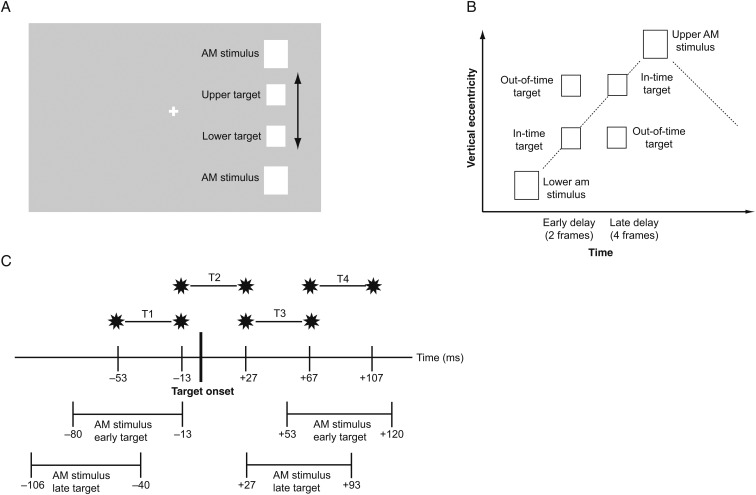Figure 1.
Stimuli and experimental design. (A) Schematic depiction of the visual stimulus (not in scale). The apparent motion inducing stimuli flashed alternately at a frequency of 3.75 Hz in the periphery. We flashed targets on the apparent motion trace at either an upper or a lower position. (B) Space-time plot of on apparent motion cycle. Targets were flashed either in-time with the illusory motion token, that is, at the expected place and time assuming a linear motion trajectory, or out-of-time with the token, that is, spatio-temporally incongruently. (C) Time windows of TMS. We applied double-pulse TMS either before target onset (T1), around target onset (T2), shortly after target onset (T3), or slightly later (T4). The interpulse interval was 40 ms.

